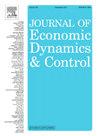Frictionless house-price momentum
IF 1.9
3区 经济学
Q2 ECONOMICS
引用次数: 0
Abstract
This paper establishes that frictionless, rational-expectations models driven by specific ARMA(2,1) processes can produce equilibrium asset-price momentum, defined as persistent movements in asset-price changes. To demonstrate this, we first document that AR(2) models adequately capture the dynamics observed in U.S. house prices, particularly the strong persistence of their first differences. Next, we show that ARMA(2,1) dividends can lead to equilibrium AR(2) asset-price dynamics within a simple present-value model. Our analytical approach provides an economic interpretation of the results, highlighting the role of anticipated shocks. Finally, we document the empirical plausibility of our theory by estimating the model using house-price data. Our analysis suggests that house-price momentum does not necessarily signal irrational exuberance or significant frictions in housing markets.
无摩擦的房价动力
本文证明,由特定 ARMA(2,1)过程驱动的无摩擦理性预期模型可以产生均衡资产价格动量,即资产价格变化的持续运动。为了证明这一点,我们首先证明 ARMA(2)模型能充分捕捉到美国房价的动态变化,尤其是其初差值的强持久性。接下来,我们证明 ARMA(2,1) 红利可以在一个简单的现值模型中导致均衡的 AR(2) 资产价格动态。我们的分析方法提供了对结果的经济解释,突出了预期冲击的作用。最后,我们利用房价数据对模型进行了估计,从而证明了我们的理论在经验上的合理性。我们的分析表明,房价上涨势头并不一定预示着非理性繁荣或房地产市场存在重大摩擦。
本文章由计算机程序翻译,如有差异,请以英文原文为准。
求助全文
约1分钟内获得全文
求助全文
来源期刊

Journal of Economic Dynamics & Control
ECONOMICS-
CiteScore
3.10
自引率
10.50%
发文量
199
期刊介绍:
The journal provides an outlet for publication of research concerning all theoretical and empirical aspects of economic dynamics and control as well as the development and use of computational methods in economics and finance. Contributions regarding computational methods may include, but are not restricted to, artificial intelligence, databases, decision support systems, genetic algorithms, modelling languages, neural networks, numerical algorithms for optimization, control and equilibria, parallel computing and qualitative reasoning.
 求助内容:
求助内容: 应助结果提醒方式:
应助结果提醒方式:


